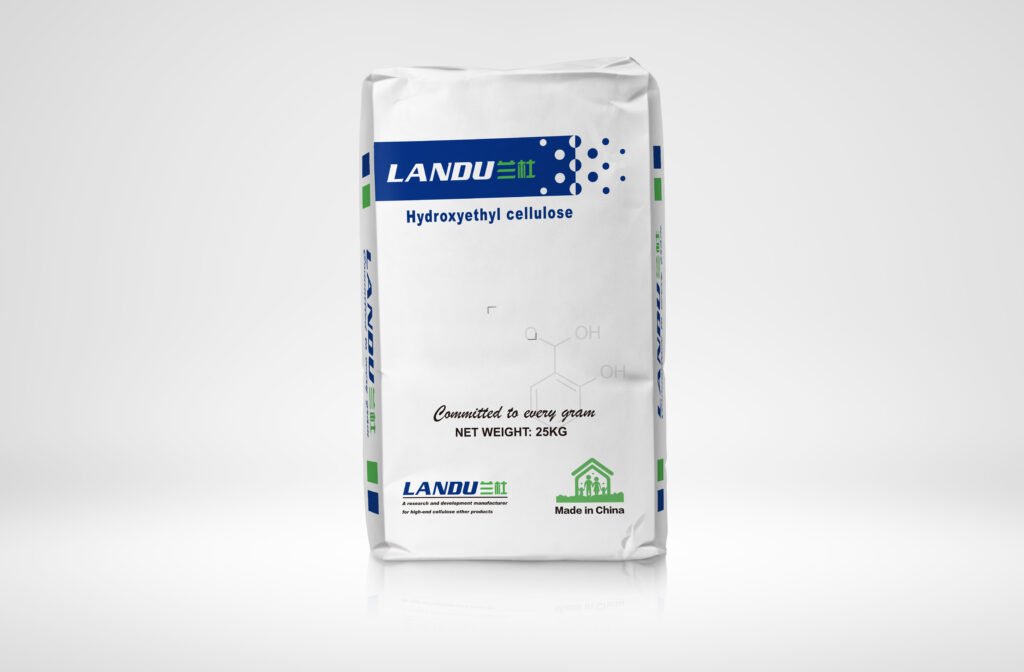
Hydroxyethyl Cellulose (HEC) is a thickener and stabilizer widely used in the coatings industry and is favored by coatings manufacturers for its excellent performance and wide applicability. The role of HEC is crucial during the production and application of coatings. This article will discuss common questions about HEC in coatings in the form of questions and answers, and provide detailed answers to help readers better understand and apply this important chemical raw material.
1. What is the main function of HEC in coatings?
As a thickener and stabilizer, HEC’s main function in coatings is to improve the construction performance and final effect of coatings by increasing the viscosity of coatings.
Specifically, HEC effectively prevents pigments and fillers from settling, ensuring paint remains uniform during storage and use. In addition, HEC provides excellent leveling and spatter resistance, making the paint smoother when brushed or sprayed. HEC is highly water-soluble, which means it dissolves quickly in water-based coatings, creating a uniform thickening effect. At the same time, HEC exhibits stable thickening capabilities over a wide pH range and therefore works effectively in different types of coatings. In general, the role of HEC in coatings is not limited to thickening. It also provides important guarantees for the stability, workability and final film quality of coatings.
2. How does HEC affect the application performance of coatings?
The construction performance of coatings directly affects the smoothness of the construction process and the quality of the final coating film. HEC has a significant impact on the application performance of coatings through its unique rheological properties.
Specifically, HEC improves the flow and spreadability of paint, which means the paint is easier to apply and covers the surface more evenly, creating a smooth film during application. In addition, HEC has the ability to enhance the paint’s resistance to spatter, which is particularly important for high-quality coatings. Paint with strong splash resistance is easier to control during the painting or spraying process, reducing splashing, sagging and dripping, thereby reducing material waste and improving construction efficiency. At the same time, the addition of HEC can also improve the leveling properties of the paint, reduce brush marks or roller marks on the surface of the paint film, and ensure a smooth paint film.
3. Why choose HEC over other thickeners?
Although there are many thickeners available on the market, HEC is widely used in coatings mainly because it has multiple advantages that other thickeners cannot match. First, HEC has excellent water solubility, which means it can quickly dissolve in water-based coatings to create a stable thickening effect. Second, HEC is stable over a wide pH range, making it suitable for use in a variety of different types of coatings, including acidic and alkaline coatings.
Compared with other thickeners, HEC also has excellent low-temperature solubility which can quickly dissolve even in low-temperature environments to exert a thickening effect. In addition, HEC is also biologically stable and less susceptible to microbial degradation during storage, thereby reducing the risk of viscosity changes during coating storage. These characteristics make HEC an indispensable thickener of choice in the coatings industry.

4. What effect does HEC have on the gloss and clarity of coating?
The gloss and transparency of coating are important factors that determine the appearance quality of the coating film. As a thickener, HEC generally does not negatively affect the gloss and clarity of paints. On the contrary, due to its excellent suspension properties, HEC can effectively disperse the pigments and fillers in the coating, ensuring a smooth and uniform coating film, thus maintaining the expected gloss and transparency of the coating.
In some cases, adding HEC can also improve the gloss of a paint. By increasing the viscosity of the paint, HEC can make the coating film more uniform and reduce minor unevenness on the surface, thereby improving light reflection and making the coating film look brighter and smoother. Therefore, for coatings that require high gloss and clarity, selecting the appropriate type and amount of HEC can help achieve the desired visual effect.
5. How to solve the clumping problem that may occur during the dissolution process of HEC?
Although HEC is widely used in coatings, it can suffer from clumping problems during its dissolution process, especially when added to water. If not handled properly, these clumps may be difficult to completely dissolve, affecting the quality of the final paint. In order to effectively avoid this problem, commonly used methods include the following:
First, the water should be constantly stirred while dissolving HEC to prevent the powder from clumping into clumps. HEC powder can be slowly sprinkled into the stirring water to avoid adding too much powder at once. Additionally, pre-mixing HEC with other dry powders, such as pigments or fillers, and then adding water to mix and dissolve reduces the likelihood of clumping.
Second, using water at the appropriate temperature will also help HEC dissolve better. While HEC dissolves in cold water, it dissolves faster and more effectively in warm water. Finally, choosing HEC with a smaller particle size also helps reduce clumping, as fine powders are more easily dispersed evenly in water, forming a uniform, thickened solution more quickly.
6. How is the dosage of HEC determined?
The amount of HEC used in a coating is not fixed and depends on several factors, including the desired coating viscosity, the type of coating and the specific application requirements. Typically, the amount of HEC added is between 0.3% and 1.0%, and this range can be specifically adjusted through experimentation.
In order to determine the optimal amount of HEC, a series of experiments can be conducted to gradually adjust the addition ratio of HEC and observe the rheological properties, workability and final film quality of the coating. For example, for coatings that require high viscosity, the dosage of HEC can be increased appropriately, but at the same time, care should be taken to avoid excessive dosage that may cause the coating to become too thick and affect construction operability. Through reasonable experimental design and testing, the optimal HEC dosage is determined to meet the application needs of the coating.
7. Are HEC applications different in different types of coatings?
HEC’s broad applicability allows it to be used in many types of coatings, including latex paints, water-based paints, primers, and topcoats. However, different types of coatings have different viscosity and rheology requirements, so the amount and dissolution pattern of HEC may be adjusted.
For example, in latex paints, HEC is mainly used to increase the viscosity of the paint, enhance its flow property and coatability, and reduce sagging. And in water-based coatings, HEC can also be used as a stabilizer to prevent the coating from delaminating during storage. In primers and topcoats, the main function of HEC is to improve the flatness and spatter resistance of the coating film, thereby ensuring the uniformity and aesthetics of the coating.
In short, the application of HEC in different types of coatings needs to be adjusted according to specific formulations and requirements to give full play to its thickening, stabilizing and modifying functions. Through the rational use of HEC, various properties of coatings can be optimized and the quality of the final product can be improved.


Conclusion
Hydroxyethyl Cellulose (HEC), as an important chemical raw material, plays an irreplaceable role in the coatings industry due to its versatility and stability. Through the answers to the above seven frequently asked questions, it can be seen that HEC has significant advantages in improving coating application performance, maintaining coating quality, and meeting different application needs. Understanding and properly applying HEC is critical for coating manufacturers and applicators.


